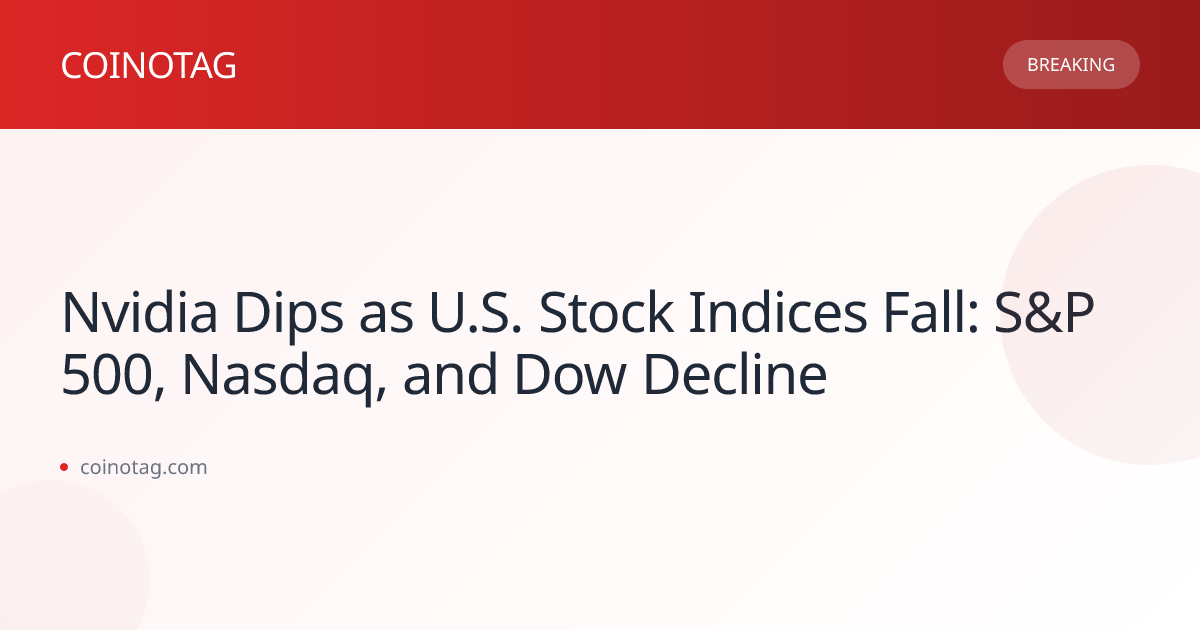
BitcoinWorld Bitcoin Sell-Off: Shocking Truth About Who’s Really Driving the Market Downturn Have you been wondering what’s really behind the recent Bitcoin price drop? According to VanEck’s latest analysis, the current Bitcoin sell-off isn’t what most investors assume. Contrary to popular belief, long-term Bitcoin holders aren’t the ones panic selling – it’s actually medium-term traders who are driving this market movement. This crucial insight changes everything about how we understand the current cryptocurrency landscape. Who’s Really Driving the Bitcoin Sell-Off? VanEck’s comprehensive research reveals a surprising truth about the recent Bitcoin sell-off. The asset management firm found that addresses that last moved BTC within the past five years account for most of the recent selling pressure. Meanwhile, genuine long-term Bitcoin holders have remained remarkably steady despite worsening market conditions. This distinction matters because it suggests we’re seeing strategic repositioning rather than investor capitulation. The data shows clear patterns in holder behavior during this Bitcoin sell-off period. Medium-term holders, typically those who acquired Bitcoin between three to five years ago, are actively rotating their positions. However, true long-term investors – those holding Bitcoin for more than five years – continue to demonstrate extraordinary patience and conviction in their investment thesis. What Do the Numbers Reveal About This Bitcoin Sell-Off? VanEck’s quantitative analysis provides concrete evidence supporting their conclusions about the current Bitcoin sell-off. The research highlights several key metrics that paint a clear picture of market dynamics: BTC balance in 3-5 year holder wallets dropped by 32% over two years Open interest in BTC perpetual futures fell 20% since October 9 Funding rates have declined to bear market levels Long-term holder inactivity remains at historically high levels These metrics collectively indicate that the current Bitcoin sell-off represents trader rotation rather than fundamental investor abandonment. The stability among long-term holders suggests underlying confidence in Bitcoin’s future prospects, even during this challenging period. Why Does This Bitcoin Sell-Off Pattern Matter for Investors? Understanding the true drivers behind this Bitcoin sell-off provides valuable insights for strategic decision-making. When medium-term traders lead selling pressure while long-term holders remain steadfast, it typically signals market maturation rather than collapse. This pattern often precedes significant rebounds as weaker hands transfer assets to stronger, more committed investors. VanEck concludes that these combined factors – stable long-term holders, strategic trader rotation, and futures market capitulation – have positioned Bitcoin in what they call a “reset” state. Historical data suggests that such reset phases often create ideal entry points for savvy investors who understand the difference between temporary volatility and permanent value destruction. What Can We Expect After This Bitcoin Sell-Off? The current Bitcoin sell-off dynamics point toward potential opportunities rather than reasons for panic. VanEck’s analysis indicates that when medium-term holders complete their position adjustments and futures markets stabilize, Bitcoin could be primed for its next upward movement. The firm specifically notes that this reset state “could be followed by a rebound” once the current redistribution phase concludes. For investors concerned about the ongoing Bitcoin sell-off, the key takeaway is perspective. Recognizing that we’re experiencing trader-driven volatility rather than fundamental investor exodus provides crucial context. This understanding helps maintain emotional discipline during market turbulence and positions investors to capitalize on opportunities that temporary price dislocations create. The recent Bitcoin sell-off represents a classic market rotation rather than systemic failure. Medium-term traders are adjusting positions while long-term believers maintain their conviction. This creates a healthy market reset that could establish the foundation for Bitcoin’s next significant advance. Understanding these dynamics separates successful investors from reactive traders during challenging market conditions. Frequently Asked Questions What exactly is a medium-term Bitcoin holder? Medium-term Bitcoin holders typically include investors who have held BTC for approximately three to five years. These investors often show more active trading behavior compared to long-term holders while maintaining longer time horizons than day traders. How does this Bitcoin sell-off compare to previous market downturns? Current patterns resemble historical corrections where medium-term profit-taking precedes renewed bullish momentum. The key difference is the remarkable stability among long-term holders, suggesting stronger fundamental conviction. Should I be worried about my Bitcoin investments during this sell-off? VanEck’s analysis suggests this represents healthy market dynamics rather than fundamental deterioration. Historical patterns indicate such resets often create attractive entry points for strategic investors. What signals should I watch for the Bitcoin sell-off to end? Key indicators include stabilization in futures funding rates, reduced selling volume from medium-term wallets, and renewed accumulation patterns among long-term addresses. How long do these Bitcoin sell-off phases typically last? While timing varies, similar redistribution phases historically lasted several weeks to months, depending on market conditions and broader macroeconomic factors. Are institutional investors participating in this Bitcoin sell-off? VanEck’s data focuses on wallet behavior rather than investor classification, but the stability among long-term holders suggests institutional positions remain largely intact. Found this analysis of the Bitcoin sell-off insightful? Help other investors understand these crucial market dynamics by sharing this article on your social media channels. Knowledge empowers better investment decisions during volatile periods. To learn more about the latest Bitcoin trends, explore our article on key developments shaping Bitcoin price action and institutional adoption. This post Bitcoin Sell-Off: Shocking Truth About Who’s Really Driving the Market Downturn first appeared on BitcoinWorld .
Bitcoin World
You can visit the page to read the article.
Source: Bitcoin World
Disclaimer: The opinion expressed here is not investment advice – it is provided for informational purposes only. It does not necessarily reflect the opinion of BitMaden. Every investment and all trading involves risk, so you should always perform your own research prior to making decisions. We do not recommend investing money you cannot afford to lose.
Bitcoin Price Plummets: BTC Crashes Below $87,000 Mark

BitcoinWorld Bitcoin Price Plummets: BTC Crashes Below $87,000 Mark Cryptocurrency markets experienced significant turbulence today as Bitcoin price dropped below the crucial $87,000 threshold. According to real-time market data from Bitcoin World, BTC is currently trading at $86,974.87 on the Binance USDT market, marking a notable decline that has caught investors’ attention worldwide. What’s Driving the Bitcoin Price Decline? The sudden Bitcoin price movement has left many traders wondering about the underlying causes. Market analysts point to several factors that could be influencing this downward trend. Technical indicators suggest potential resistance levels were tested, while broader market sentiment may be contributing to the selling pressure we’re witnessing across cryptocurrency exchanges. Moreover, recent global economic developments and regulatory announcements have created uncertainty in digital asset markets. These external factors often trigger volatility in Bitcoin price movements, as institutional and retail investors alike reassess their positions during periods of market uncertainty. How Does This Bitcoin Price Drop Compare to Historical Trends? When analyzing the current Bitcoin price situation, it’s helpful to consider historical context. Bitcoin has experienced similar corrections throughout its history, and seasoned investors recognize these patterns as normal market behavior. However, each price movement carries unique characteristics based on current market conditions and adoption levels. Key observations about current Bitcoin price behavior include: Technical support levels being tested Increased trading volume during the decline Market sentiment shifting temporarily Long-term holders showing varied responses What Should Investors Watch Regarding Bitcoin Price Movements? For those monitoring the Bitcoin price closely, several indicators deserve attention. Trading volume patterns, market depth analysis, and order book dynamics can provide valuable insights into potential price directions. Additionally, keeping track of major support and resistance levels helps traders make informed decisions during volatile periods. Remember that short-term Bitcoin price fluctuations don’t necessarily reflect long-term value propositions. Many cryptocurrency experts emphasize the importance of maintaining perspective during market corrections, as historical data shows recovery patterns following similar declines. Navigating Market Volatility: Practical Strategies When the Bitcoin price experiences significant movements, having a clear strategy becomes crucial. Consider these approaches: Dollar-cost averaging to mitigate timing risks Setting clear investment boundaries based on risk tolerance Monitoring multiple timeframes for better perspective Diversifying across assets to manage overall portfolio risk These strategies can help investors navigate the current Bitcoin price environment while maintaining a balanced approach to cryptocurrency investing. Conclusion: Understanding the Bigger Picture While today’s Bitcoin price drop below $87,000 certainly captures attention, it’s essential to view such movements within broader market contexts. Cryptocurrency markets naturally experience fluctuations, and current levels may present opportunities for informed investors. The key lies in thorough research, risk management, and maintaining a long-term perspective despite short-term price actions. Frequently Asked Questions What caused Bitcoin to fall below $87,000? The decline resulted from combined factors including technical resistance, market sentiment shifts, and broader economic conditions affecting cryptocurrency valuations. Is this a good time to buy Bitcoin? Market timing is challenging. Many investors use dollar-cost averaging strategies rather than trying to predict exact price bottoms during volatility. How low could Bitcoin price go? Predicting exact price levels is difficult. Focus instead on understanding support levels and market fundamentals rather than specific price predictions. Should I be worried about my Bitcoin investment? Price volatility is normal in cryptocurrency markets. Assess your investment based on your risk tolerance and long-term strategy rather than short-term movements. What indicators should I watch during Bitcoin price drops? Monitor trading volume, market depth, major support levels, and broader market sentiment for comprehensive understanding. How often does Bitcoin experience such price movements? Significant price movements occur regularly in cryptocurrency markets. Historical data shows both upward and downward volatility as characteristic of digital assets. Found this analysis helpful? Share this article with fellow cryptocurrency enthusiasts on social media to help others understand current Bitcoin price dynamics and market trends. To learn more about the latest Bitcoin trends, explore our article on key developments shaping Bitcoin price action and market analysis. This post Bitcoin Price Plummets: BTC Crashes Below $87,000 Mark first appeared on BitcoinWorld . Bitcoin World

Crypto Fear & Greed Index Plunges to 14: What Extreme Fear Means for Your Investments
BitcoinWorld Crypto Fear & Greed Index Plunges to 14: What Extreme Fear Means for Your Investments Are you feeling the tension in cryptocurrency markets? The Crypto Fear & Greed Index just registered at 14, indicating extreme fear among investors. This crucial sentiment indicator has climbed only three points from yesterday’s reading, keeping the market firmly in panic territory. What Exactly is the Crypto Fear & Greed Index? The Crypto Fear & Greed Index serves as the market’s emotional thermometer. It measures investor sentiment on a scale from 0 to 100, where 0 represents maximum fear and 100 indicates extreme greed. Currently sitting at 14, we’re witnessing one of the most fearful periods in recent memory. This powerful tool calculates market emotions using multiple factors: Volatility (25% weighting) Market momentum and volume (25%) Social media sentiment (15%) Survey data (15%) Bitcoin dominance (10%) Search trends (10%) Why Should You Care About Extreme Fear Levels? When the Crypto Fear & Greed Index hits extreme fear levels, it often signals potential buying opportunities. Historically, periods of maximum fear have preceded significant market rebounds. However, understanding the underlying causes is crucial for making informed decisions. The current reading suggests investors are reacting to several factors including regulatory uncertainty, macroeconomic pressures, and recent market volatility. This collective anxiety creates a market environment where even positive news might be overlooked. How Can You Use This Information Strategically? Monitoring the Crypto Fear & Greed Index provides valuable insights for both short-term traders and long-term investors. During extreme fear periods, consider these approaches: Dollar-cost averaging into quality projects Setting clear risk management parameters Avoiding emotional decision-making Researching fundamentally strong assets Remember that the Crypto Fear & Greed Index measures current sentiment, not future performance. While it’s a useful tool, it should complement your broader investment strategy rather than dictate it. What Does History Tell Us About Fear Cycles? Previous instances where the Crypto Fear & Greed Index reached similar extreme fear levels often marked significant turning points. However, timing the market perfectly remains challenging. The key lies in maintaining perspective and sticking to your investment plan. Market sentiment tends to move in cycles. Extreme fear typically gives way to neutral sentiment before transitioning to greed. Understanding these patterns can help you navigate volatile periods more effectively. Conclusion: Navigating the Fear Waters The Crypto Fear & Greed Index at 14 clearly signals widespread investor anxiety. While this creates short-term challenges, it also presents opportunities for disciplined investors. By understanding market sentiment indicators and maintaining emotional control, you can make more informed decisions during turbulent times. Frequently Asked Questions What does a Crypto Fear & Greed Index of 14 mean? A reading of 14 indicates extreme fear in cryptocurrency markets. This suggests most investors are pessimistic and selling pressure may be high. How often is the Crypto Fear & Greed Index updated? The index updates daily, providing regular insights into changing market sentiment patterns. Can the Crypto Fear & Greed Index predict price movements? While it doesn’t predict prices directly, extreme readings often coincide with potential market turning points based on historical patterns. Is the Crypto Fear & Greed Index reliable for investment decisions? It’s best used as one tool among many in your analysis, not as a standalone investment signal. What’s the difference between fear and greed in crypto markets? Fear drives selling during downturns, while greed fuels buying during rallies – both represent emotional extremes that can create opportunities. How long do extreme fear periods typically last? Duration varies widely, from several days to multiple weeks, depending on market conditions and catalyst events. Found this analysis helpful? Share this article with fellow investors who could benefit from understanding the Crypto Fear & Greed Index and help them navigate these fearful market conditions. To learn more about the latest crypto market trends, explore our article on key developments shaping Bitcoin price action and institutional adoption. This post Crypto Fear & Greed Index Plunges to 14: What Extreme Fear Means for Your Investments first appeared on BitcoinWorld . Bitcoin World











